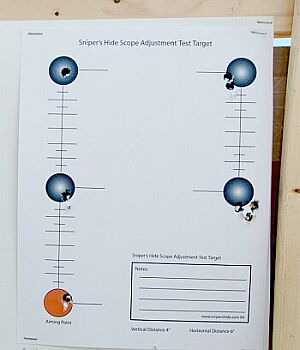G
Guest
Guest
I was shooting my 300RUM yesterday, from the lead sled at 100 yds, 50-degree weather, same solid set up as always and decided to sight the gun in for this load. Gun was shooting 1.5 " right so I adjusted it 6-clicks left( 1/4" @100yds) it shot 2.25" left. finally got it centered after a few more shots. The gun was 1" high so I adjusted it 8-clicks to move up 2" as I want it to print 3" high at 100 yds. The shot was 3" high. Seems like it takes a few shots to settle in after making adjustments. I do not recall this ever happening before since I have owned this scope. Scope mounts and rings are tight, stock screws are tight, barrel is free floated with pillars no binding is taking place. I know its not the load as it is proven and groups very well.
Anyone have suggestions, maybe the scope having internal issues?
Thanks,
Don
Anyone have suggestions, maybe the scope having internal issues?
Thanks,
Don





